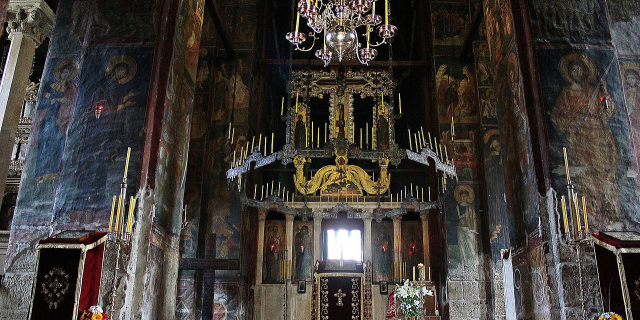Ulpiana was an ancient Roman city located in what is today Kosovo. It was also named Justiniana Secunda (Latin: Iustiniana Secunda, Albanian: Justinianë Sekundë, Serbian: Јустинијана Секунда). Ulpiana is situated in the municipality of Gračanica, 12 km to the southeast of Pristina. The Minicipium Ulpiana - Iustiniana Secunda was proclaimed archaeological park under permanent protection of Kosovo by the Kosova Council for Cultural Heritage in 2016. The Archaeological Park has a surface of 161.10 hectares and a surrounding protection zone of 96.23 hectares. Ulpiana was among the largest settlements in the Balkans of the late antiquity.
The city of Ulpiana was established in the 1st century AD, possibly developing from a concentrated Dardanian oppidum. Ulpiana was upgraded to the status of a Roman municipium at the beginning of the 2nd century.[1] The upgrade to municipium took place during the rule of Trajan, before 117 AD and was named after the emperor.[2][3] Ulpiana was an important city located along Via Lissus-Naissus and was very close to the Dardanian capital Scupi.[2] It was also among the largest settlements in the Balkans of the late antiquity.[4] It is located close to the gold and silver mines of Janjevo and Shashkoc and archaeological findings suggest that the city was inhabited even before Roman rule.[5][1] The first known mention of Ulpiana in ancient sources was done by Ptolemy and dates back to the second decade of the 2nd century AD.[6]
 A view of the right pipe that brought water to the Baptistry of the Episcopal Basilica.
A view of the right pipe that brought water to the Baptistry of the Episcopal Basilica.Ulpiana reached the peak of its development in the 3rd and 4th centuries AD, at some point becoming the episcopal center of Dardania and hosting the Archbishop of Dardania. During this time, Ulpiana was known as Municipum Ulpiana Splendidissima (the Magnificent City of Ulpiana) and served as an important political, cultural, and economic center of the Roman Empire in Dardania. It contained a Decumanus Maximus street network, living quarters, utility buildings, as well as an aqueduct, supplying water to each building. Its proximity to silver and gold mines made it an important mining and craftsmanship center.[3]
Christianity started to flourish in the Balkans as early as the 1st century AD and had an important role in the development and importance of the city. The first mention of Christians in Ulpiana is the martyrdom of the brothers Florus and Laurus. They were originally from Constantinople and were building a pagan temple in Ulpiana when their Christian identity was deciphered and they were martyred.[7] In the second half of the 4th century, before the invasion of the Goths, the seat of the bishopric of Dardania was placed in Ulpiana. The first known bishop of Ulpiana is Machedonius, who was a member of the council of Serdika. Other known bishops were Paulus (synod of Constantinople in 553 AD), and Gregentius, who was sent by Justin I to Ethiopia and Yemen to ease problems among different Christian groups there.[5] Ulpiana remained the episcopal center of Dardania until the establishment of Justiniana Prima in 535 AD.[5][2]
 A layer of ash and carbon from the time the city was burnt down by the Slavs in the 7th-8th century AD.
A layer of ash and carbon from the time the city was burnt down by the Slavs in the 7th-8th century AD.Archaeological evidence suggests that after reaching its peak, Ulpiana shrank in the 5th and 6th centuries, due to natural disasters, as well as barbarian attacks during the weakening and subsequent fall of the Roman Empire. In 358 AD, Ulpiana was hit by the shockwaves of the devastating Nicomedia earthquake, resulting in some buildings being damaged. In 472 AD, King Theoderic the Great of the Goths attacked the city with 3,000 soldiers, plundering it and destroying parts of it.[8][2] According to the chronicle and writings of Marcellinus Comes, Ulpiana was hit by another devastating earthquake in the year 518 that severely damaged Ulpiana and destroyed another 24 major cities in the region.[2] Emperor Justinian rebuilt the city and its fortifications sometime after 535 AD and renamed the city to Iustinianna Secunda.[9] Nevertheless, not long after, Ulpiana suffered from constant Avaric and Slavic attacks and after the latter invaded the Balkans in 618, they burned Ulpiana to the ground. Some sources say that afterward it became uninhabited, but other sources suggest that at least the northern church of the city and some other buildings continued to be used throughout the entire 7th century. Eventually, the city fell under ruins and its materials were reused for other constructions. The lower parts of the walls of the Gračanica Monastery were built with gravestones from Ulpiana. The epitaphs are still visible today.[5]






























Add new comment